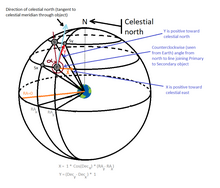133:
201:. During the week of 12 April 2021, the Horizons ephemeris system was updated to replace the DE430/431 planetary ephemeris, used since 2013, with the new DE440/441 solution. The new DE440/441 general-purpose planetary solution includes seven additional years of ground and space-based astrometric data, data calibrations, and dynamical model improvements, most significantly involving Jupiter, Saturn, Pluto, and the Kuiper Belt. Inclusion of 30 new Kuiper-belt masses, and the Kuiper Belt ring mass, results in a time-varying shift of ~100 km in DE441's barycenter relative to DE431.
36:
370:
256:
it is impossible to know if an object with a weak hyperbolic trajectory will truly be ejected or gently nudged back inward. The galactic tide and passing stars can also cause objects inbound from the Oort cloud to have a weakly hyperbolic trajectory.
198:
100:
72:
79:
305:
86:
209:
119:
57:
50:
68:
132:
244:(date) when the object is outside of the planetary region of the Solar System and no longer subject to notable planetary
191:(x,y,z), and adjusts the initial conditions in order to fit modern, highly accurate measurements of planetary positions.
431:
426:
188:
379:. Ephemeris Type:Elements and Center:@0 (To be outside planetary region, inbound epoch 1950 and outbound epoch 2050)
93:
46:
326:
180:
170:
245:
205:
166:
158:
253:
225:
174:
183:(JPL) ephemerides do not use things such as periods, eccentricities, etc. Instead, JPL integrates the
229:
421:
288:
The
Horizons system was intended to be easy to use and should have a step-function learning curve.
184:
241:
233:
154:
162:
150:
161:) are always an approximation to an object's orbit (i.e. an unperturbed conic orbit or a "
415:
249:
143:
provides access to key Solar System data and flexible production of highly accurate
237:
347:
144:
35:
402:
376:
136:
Graphic representation of JPL Horizons On-Line
Ephemeris System output values
221:
195:
17:
240:
of PR= 9.99E+99. For objects orbiting the Sun, this is best computed at an
396:
165:" orbit). The real orbit (or the best approximation to such) considers
371:"Barycentric Osculating Orbital Elements for Comet C/1980 E1 (Bowell)"
392:
281:
265:
There are 3 ways to use the system and all of them can be automated:
323:
275:
131:
406:
324:"Frequently Asked Questions (FAQ): What's the exact value of..."
306:"Cercansi collaboratori per interfaccia grafica NASA Horizons"
269:
29:
173:, a few other usually small physical forces, and requires
204:In September 2021 JPL started transitioning from
346:Jet Propulsion Laboratory (August 28, 2015).
317:
315:
8:
194:Since August 2013, Horizons has been using
120:Learn how and when to remove this message
297:
69:"JPL Horizons On-Line Ephemeris System"
56:Please improve this article by adding
393:JPL Horizons On-Line Ephemeris System
141:JPL Horizons On-Line Ephemeris System
7:
350:. "Long term ephemeridies" section
25:
322:Alan B. Chamberlin (2006-02-28).
210:application programming interface
375:Solution using the Solar System
34:
1:
169:by all planets, a few of the
58:secondary or tertiary sources
403:HORIZONS Batch-Interface CGI
448:
147:for Solar System objects.
327:JPL Solar System Dynamics
181:Jet Propulsion Laboratory
157:(such as produced by the
206:common gateway interface
236:of AD= 9.99E+99 and an
159:JPL Small-Body Database
348:"HORIZONS User Manual"
137:
45:relies excessively on
189:Cartesian coordinates
175:numerical integration
135:
27:Astronomical database
397:HORIZONS User Manual
432:JPL online services
232:greater than 1, an
226:ejection trajectory
185:equations of motion
151:Osculating elements
427:Astronomy websites
308:. 28 October 2019.
138:
407:JPL SSD/CNEOS API
369:Horizons output.
261:Overview of usage
234:apoapsis distance
224:) on an outbound
220:Objects (such as
130:
129:
122:
104:
16:(Redirected from
439:
380:
374:
366:
360:
359:
357:
355:
343:
337:
336:
334:
333:
319:
310:
309:
302:
272:(partial access)
171:larger asteroids
125:
118:
114:
111:
105:
103:
62:
38:
30:
21:
447:
446:
442:
441:
440:
438:
437:
436:
412:
411:
389:
384:
383:
368:
367:
363:
353:
351:
345:
344:
340:
331:
329:
321:
320:
313:
304:
303:
299:
294:
263:
218:
126:
115:
109:
106:
63:
61:
55:
51:primary sources
39:
28:
23:
22:
15:
12:
11:
5:
445:
443:
435:
434:
429:
424:
414:
413:
410:
409:
400:
388:
387:External links
385:
382:
381:
361:
338:
311:
296:
295:
293:
290:
286:
285:
279:
273:
262:
259:
217:
214:
128:
127:
42:
40:
33:
26:
24:
14:
13:
10:
9:
6:
4:
3:
2:
444:
433:
430:
428:
425:
423:
420:
419:
417:
408:
404:
401:
398:
394:
391:
390:
386:
378:
372:
365:
362:
349:
342:
339:
328:
325:
318:
316:
312:
307:
301:
298:
291:
289:
284:(full access)
283:
280:
278:(full access)
277:
274:
271:
268:
267:
266:
260:
258:
255:
254:passing stars
251:
250:galactic tide
248:. Due to the
247:
243:
239:
235:
231:
228:will show an
227:
223:
215:
213:
211:
207:
202:
200:
197:
192:
190:
186:
182:
178:
176:
172:
168:
167:perturbations
164:
160:
156:
152:
148:
146:
142:
134:
124:
121:
113:
102:
99:
95:
92:
88:
85:
81:
78:
74:
71: –
70:
66:
65:Find sources:
59:
53:
52:
48:
43:This article
41:
37:
32:
31:
19:
364:
352:. Retrieved
341:
330:. Retrieved
300:
287:
264:
246:perturbation
238:orbit period
230:eccentricity
219:
203:
193:
179:
149:
140:
139:
116:
110:October 2014
107:
97:
90:
83:
76:
64:
44:
18:JPL Horizons
354:January 10,
153:at a given
145:ephemerides
422:Astrometry
416:Categories
377:Barycenter
332:2011-01-20
292:References
80:newspapers
47:references
222:C/1980 E1
208:(CGI) to
196:ephemeris
216:Ejection
163:two-body
212:(API).
94:scholar
282:Telnet
96:
89:
82:
75:
67:
276:Email
242:epoch
199:DE431
155:epoch
101:JSTOR
87:books
356:2016
252:and
73:news
270:Web
187:in
49:to
418::
405:/
314:^
177:.
60:.
399:)
395:(
373:.
358:.
335:.
123:)
117:(
112:)
108:(
98:·
91:·
84:·
77:·
54:.
20:)
Text is available under the Creative Commons Attribution-ShareAlike License. Additional terms may apply.
